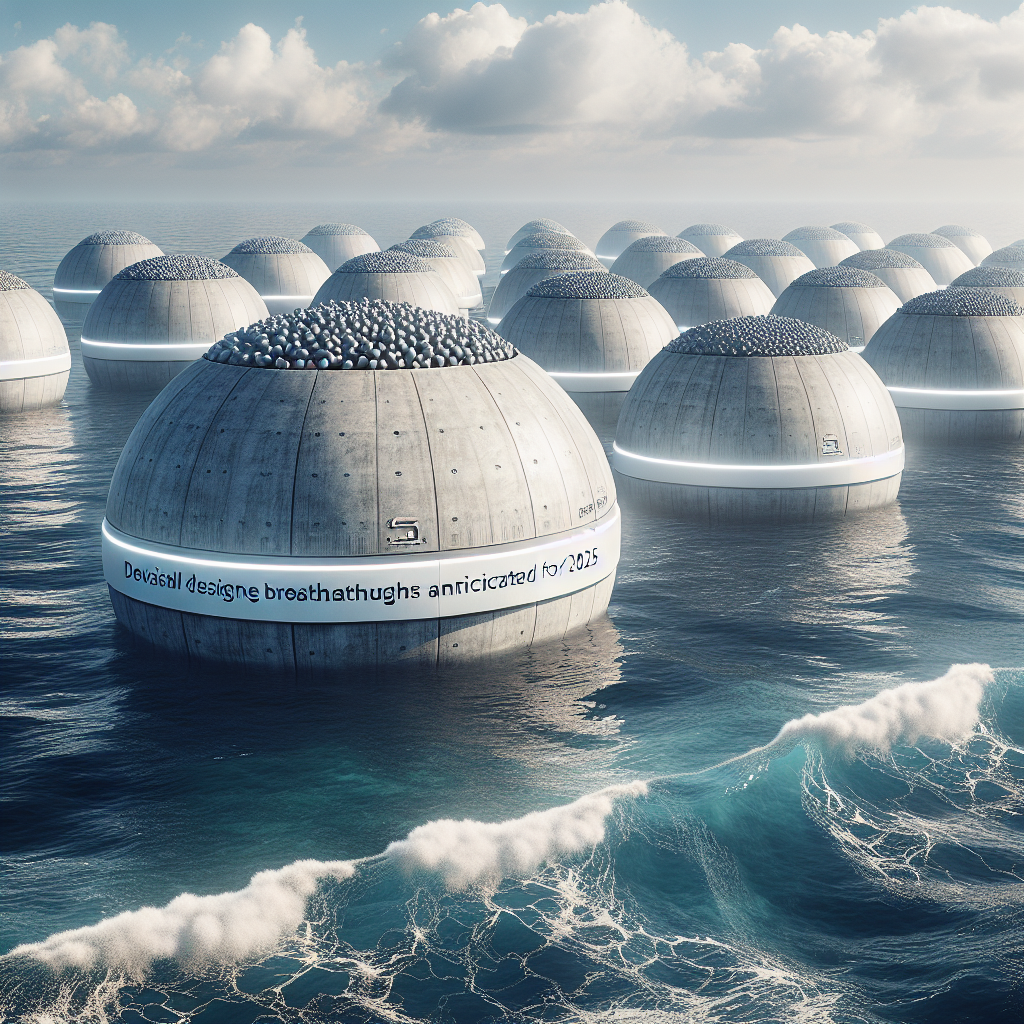Harnessing the ocean’s vast potential, revolutionary energy storage solutions are rapidly transforming the renewable landscape. Among these innovations, giant concrete orbs submerged underwater are leading the charge, promising an efficient, scalable, and eco-friendly method to store energy. With major breakthroughs expected by 2025, this novel technology could redefine how we balance energy supply and demand while tackling climate change.
Understanding Ocean-Based Energy Storage Technologies
Energy storage is critical for integrating renewables like wind and solar into power grids. Ocean-based storage options complement land-based batteries and pumped hydro by leveraging natural underwater environments. Among these emerging methods, concrete orbs have garnered attention for their durability and unique physical characteristics.
How Concrete Orbs Store Energy
The giant orbs function through gravitational potential energy. When surplus electricity is available, motors pump seawater out of these submerged spheres, reducing their weight and causing them to ascend, storing energy in the process. When electricity demand peaks, the spheres allow seawater back in, their weight forcing them to sink. This movement drives turbines that generate electricity back to the grid.
Advantages of Using Concrete Orbs
– Longevity: Concrete can resist corrosion and pressure for decades, reducing maintenance costs.
– Scalability: Orbs can be built in various sizes and deployed in arrays for increased capacity.
– Environmental Compatibility: The structure supports marine ecosystems by acting as artificial reefs.
– Low Energy Loss: This mechanical storage reduces energy loss compared to chemical batteries.
Emerging breakthroughs in materials and construction techniques are expected to further improve efficiency, durability, and cost-effectiveness by 2025.
Key Breakthroughs Accelerating the Technology Toward 2025
Material Innovation for Enhanced Durability
Recent advances in high-performance, marine-grade concrete mixes have extended the lifespan of underwater structures. These mixes incorporate additives that prevent cracking from saltwater exposure and withstand immense ocean pressure.
– Self-healing properties reduce microfractures.
– Nano-enhanced composites improve strength and flexibility.
Such innovations mean the giant orbs can operate reliably for decades without costly repairs, making energy storage economically viable on a large scale.
Advanced Robotics for Installation and Maintenance
Deploying massive orbs miles offshore requires sophisticated robotic systems.
– Autonomous underwater vehicles (AUVs) perform installation tasks with precision.
– Remote-operated vehicles (ROVs) conduct ongoing inspections and minor repairs.
These robotics breakthroughs minimize human risk and reduce operational costs, accelerating project timelines.
Integration with Renewable Energy Grids
By 2025, improved control algorithms and communication protocols will optimize how concrete orb storage interacts with renewable energy sources.
– Real-time data analytics predict power demand spikes.
– Automated adjustments in orb buoyancy help smooth grid fluctuations.
This integration ensures stored energy is dispatched precisely when needed, improving grid stability and reducing reliance on fossil fuels.
Global Pilot Projects Validating the Concept
Several pilot programs are underway worldwide, demonstrating the practical application of concrete orb energy storage.
Case Study 1: North Atlantic Orb Array
– Location: Offshore Iceland
– Capacity: 100 MWh prototype
– Result: 85% round-trip efficiency, surpassing early expectations
– Environmental Impact: Positive growth of local fish populations around orbs
Case Study 2: Mediterranean Energy Hub
– Location: Coastal Spain
– Focus: Hybrid integration with solar farms
– Outcome: Enabled 24-hour solar power delivery, dramatically reducing curtailment
Select projects are supported by government grants and private investment, signaling strong market confidence.
Challenges and Future Outlook
While promising, ocean-based energy storage still faces hurdles:
– Initial Capital Cost: Large upfront investments in manufacturing and deployment.
– Regulatory Approvals: Navigating maritime laws and environmental impact assessments.
– Technological Maturity: Ongoing research needed to improve energy density and responsiveness.
However, the 2025 breakthroughs are set to overcome many barriers. As energy storage demands grow globally, the ocean offers a compelling solution.
Practical Tips for Stakeholders Interested in Ocean Energy Storage
For utilities and investors looking to capitalize on this technology:
– Monitor pilot project developments and performance metrics regularly.
– Engage with startups and research institutes pioneering concrete orb designs.
– Consider partnerships for joint ventures in offshore energy storage deployment.
– Advocate for supportive policies that streamline permitting and funding.
– Evaluate hybrid energy systems that combine ocean storage with renewables.
Expanding knowledge now will position stakeholders to benefit from market growth in the next few years.
Driving the Future of Energy Storage Forward
The emergence of giant concrete orbs as a revolutionary energy storage method highlights how innovation can harness natural forces to solve critical challenges. This sustainable approach addresses the intermittency of renewables while fostering marine ecosystem benefits. With technological advancements accelerating toward 2025, ocean-based energy storage stands poised to become a cornerstone of global clean energy infrastructure.
Explore how these advancements can enhance your energy projects and sustainability goals by connecting with experts at https://automatizacionesaiscend.com today. Don’t miss the opportunity to be part of the ocean energy storage revolution shaping the future.



